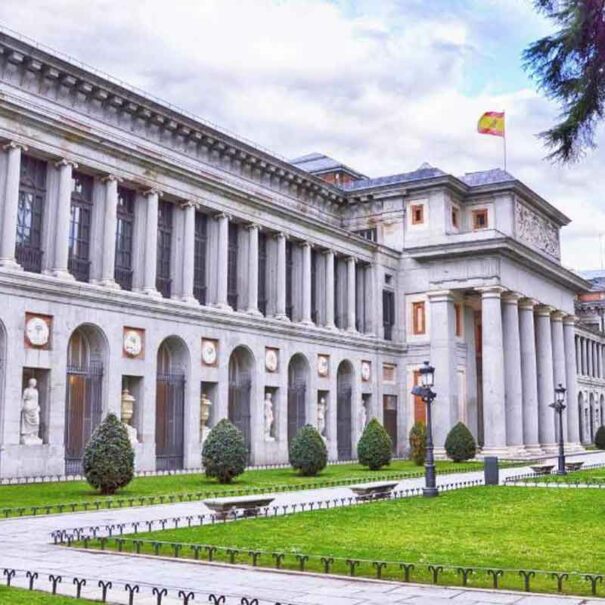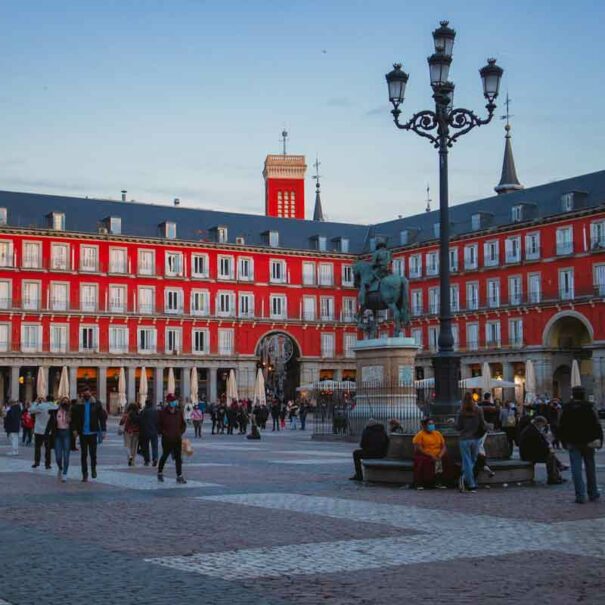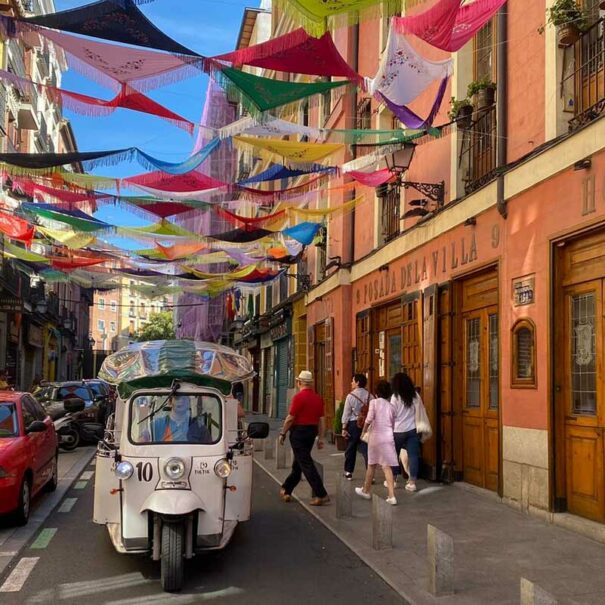Visit Madrid's Retiro Park. What to see and do ?
A veritable green lung, el parque del Retiro is a green space similar to New York’s famous Central Park. Located not far from the Paseo del Prado and the Puerta del Sol, we recommend a visit during your stay in Madrid.
This haven of peace in the heart of the capital will give you a change of scene with its many fountains, gardens, sculptures and central lake, where you can take a boat trip.
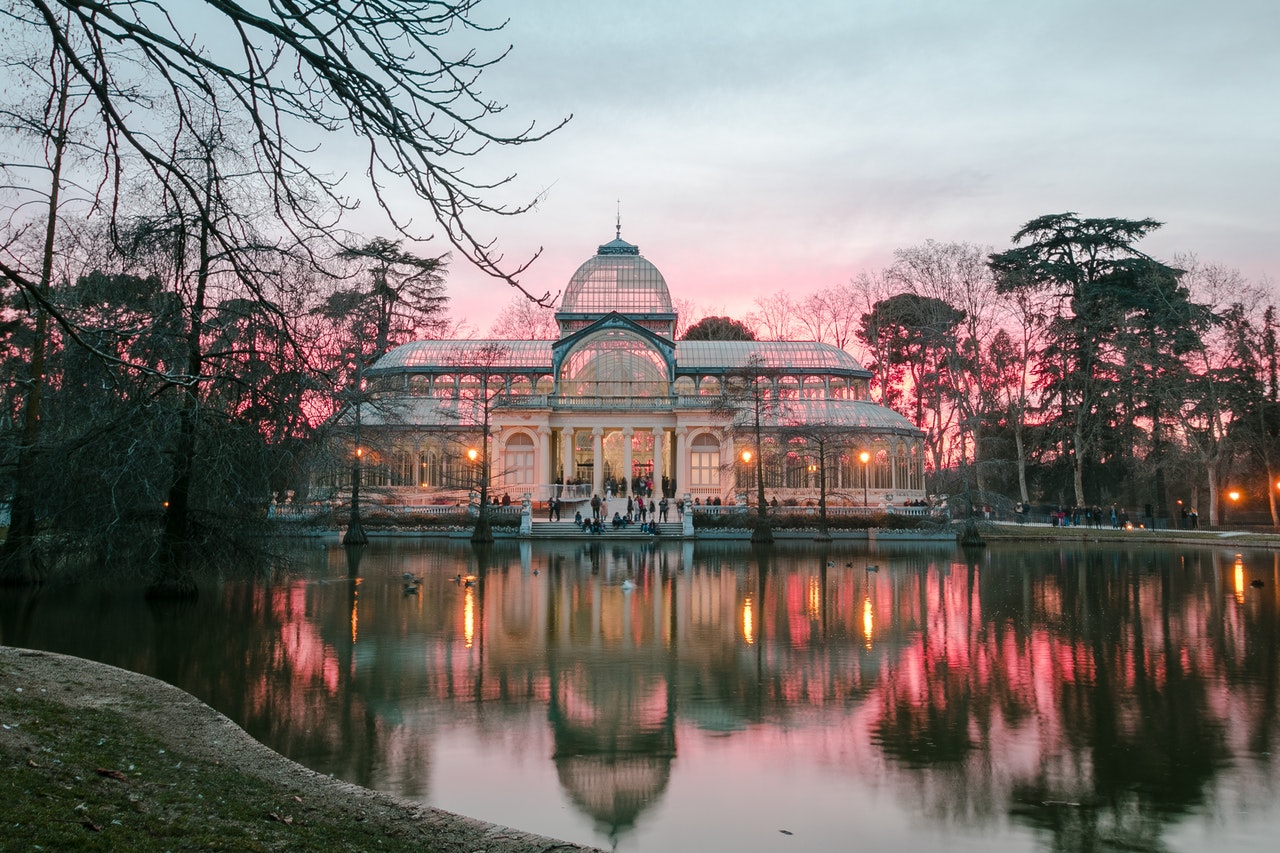
Madrid Retiro Park opening hours
Spring-summer (April to September): 6am to midnight
Autumn-Winter (October to March): 6 a.m. to 10 p.m.
ATTENTION: In the event of adverse weather conditions or inspections after heavy rain or wind, the park may be temporarily closed without notice. Please consult the signs at the entrance for further information.
Prices for Madrid's Retiro Park
Entrance to Madrid’s Retiro Park is free for all visitors. You won’t need a ticket for Retiro Park.
The history of Retiro Park
Referred to by Madrilenians as the Parque del Retiro, it was so named because it was once the spiritual retreat of the kings of Spain.
The Palacio del Buen Retiro was built as a secondary residence for the king and his court.
The gardens, once a place of entertainment and leisure for royalty, are now the park we know today.
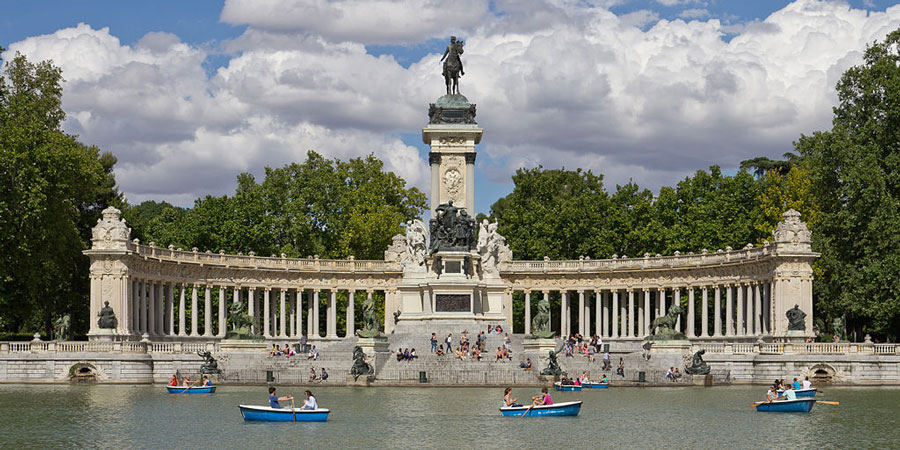
Area of Madrid's Retiro Park
Created between 1630 and 1640, el parque del Retiro covers more than 125 hectares. El Retiro features over 15,000 trees, as well as numerous fountains, sculptures and gardens. Once reserved for the king and his court, in 1868 it was finally opened to the public.
How do I get to Retiro Park?
Madrid’s Retiro Park is accessible via metro line 2, as well as the following bus routes: 1,2,9,15,19,20,26,51,52,61,63,74,146,152,C1.
If you’re taking the metro, get off at Banco de Espana station at the start of Paseo Del Prado, then continue to Puerta de Alcalá. You can also get off at Retiro station.
Guided tour of Retiro Park
Discover Retiro Park with our guided tour. Accompanied by an English-speaking guide specializing in Madrid, you’ll experience a unique and unforgettable moment.
Immerse yourself in one of Madrid’s jewels, where history, nature and culture meet in harmony. Our expert guides will reveal the park’s hidden secrets, from lush gardens to iconic monuments. Book your guided tour of Retiro Park now by contacting us via the contact tab.
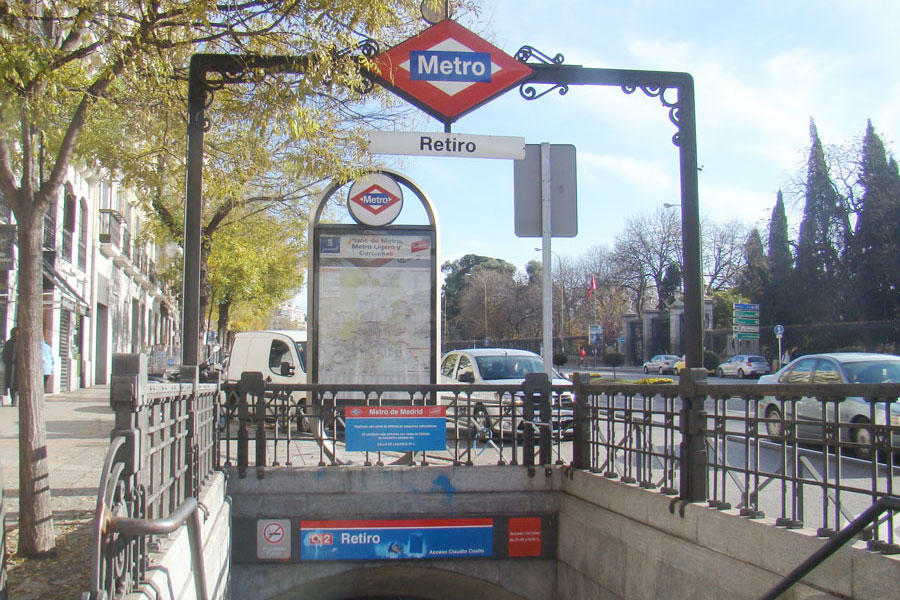
The palaces of parque del buen Retiro
El parque del Retiro is home to a number of architecturally remarkable buildings. The two most famous palaces are the Palacio de Cristal and the grand Palacio de Velázquez. Although very different, they are both must-sees in El parque del Retiro, whether for a cultural getaway or a leisurely stroll.
Both palaces are owned by the Reina Sofia Museum. For more information on temporary exhibitions, take a look at our complete guide to the Reina Sofia Museum.
The Crystal Palace in Retiro Park
The Crystal Palace is the work of architect Ricardo Velázquez. It was originally built to house an exhibition of Philippine islands, hence its initial use as a greenhouse.
Today, it regularly hosts exhibitions by the Reina Sofia Museum of Contemporary Art. An exhibition space and a work of art in its own right, it is a favorite with tourists, as it perfectly captures the light for superb photos in a unique environment.
With its 22-metre-high dome, the palace overlooks a small lake.
Please note, however, that the palace does not have the same opening hours as the park. In high season, from April to September, it opens at 10 a.m. and closes at 10 p.m., while the rest of the year, it closes at 6 p.m.
Admission to the Crystal Palace in Madrid's Retiro Park
The Crystal Palace in Retiro Park is free to visit.
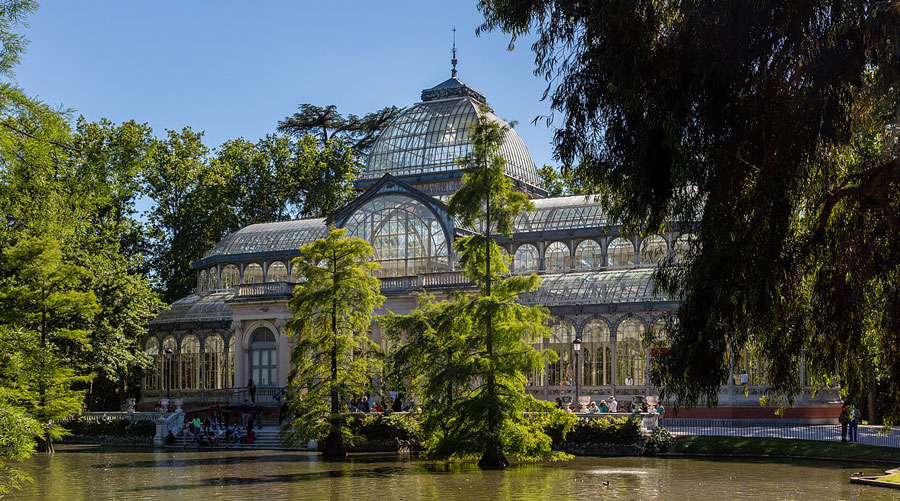
Velázquez's Grand Palace
The Grand Palacio de Velázquez is similar to the Palacio de Cristal in that it was built by the same architect, inspired by the same work and initially used for the same purpose. However, it was built a little earlier, between 1881 and 1883, to house the National Mining Exhibition.
Its structure is also made of glass and iron, with a high dome, but it stands out for its many brick pillars and its earthenware decoration from the Moncloa Royal Factory.
The palace is open from April to September between 10 a.m. and 10 p.m., from November to March between 10 a.m. and 6 p.m. and finally in October between 10 a.m. and 7 p.m.
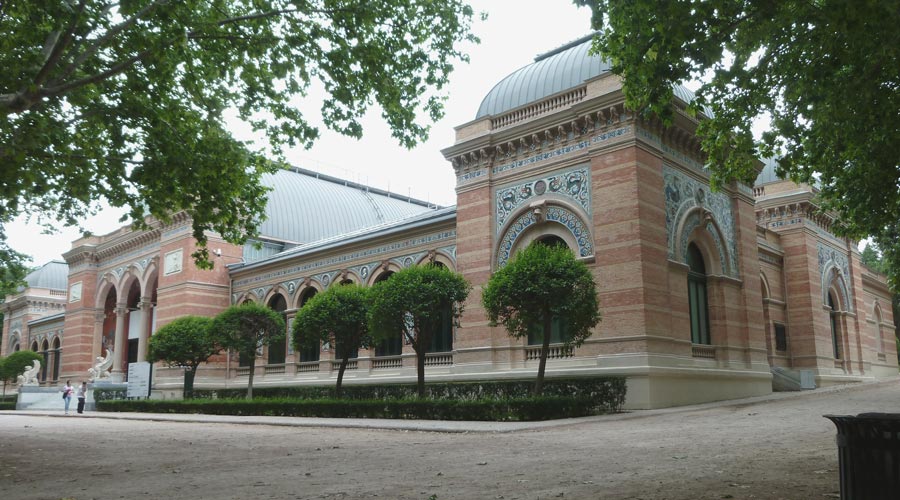
Palacio del buen Retiro - Casón du buen retiro
Formerly the ballroom of the court of Felipe IV, this building is one of the few remaining vestiges of the Retiro Park. The building has undergone extensive renovations to enlarge the room and restore the fresco on the vault by Giordano. In the past, the hall housed numerous works from the Prado Museum. Today, the building is home to the Prado Museum Studies Center, dedicated to research and the training of art experts.
It also houses the Prado Museum’s archives, documentation and conservation center and library.
The building contains a wealth of works on paintings, sculptures and drawings from the Middle Ages to the 19ᵉ century.
Since the building now houses a training facility and valuable works, it is no longer accessible to the public, but you can still admire its beautiful Baroque-style facade.
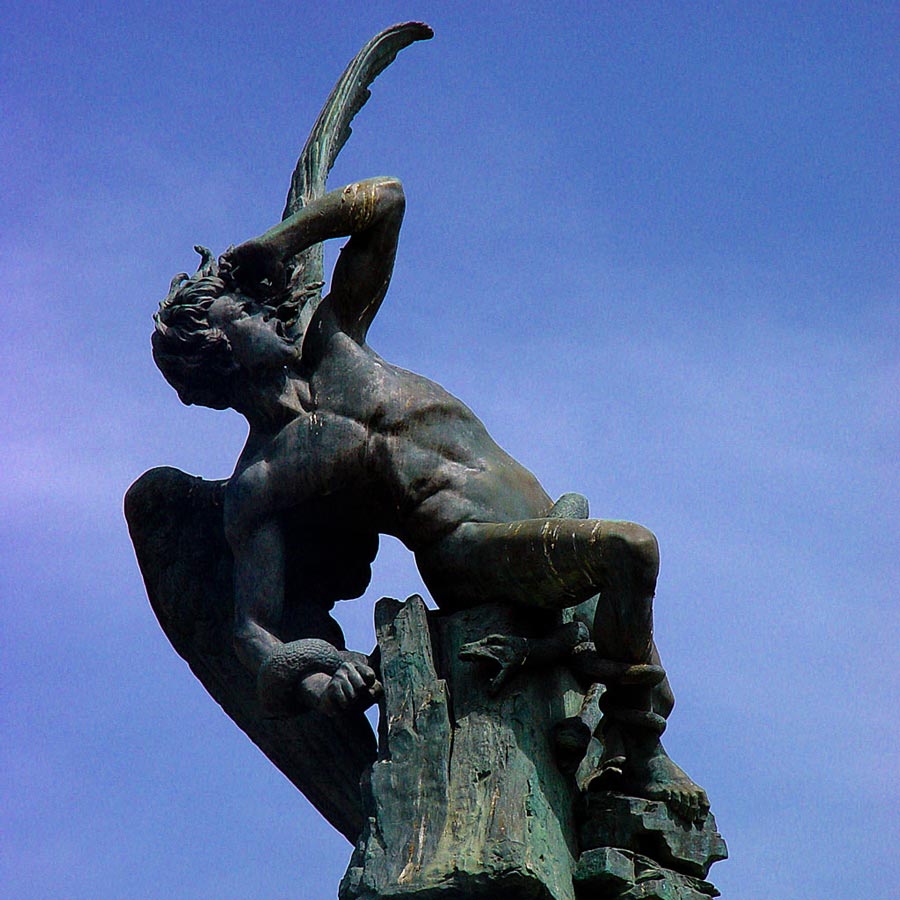
Boating on the Retiro Park pond
Built between 1634 and 1636, it was once possible to watch the king and his court enjoying a ride on the water, or water and musical shows, as a small island was located at its center. Today, it has been submerged by the waters.
A little anecdote: in 1964, the pond was used as a film set for the movie “Le monde fabuleux du cirque”, which featured John Wayne among its famous cast.
You can rent a rowboat or a solar-powered boat on this artificial lake to soak up the sunshine and take a stroll on the water. A real attraction in Retiro Park, we advise you to come as soon as the lake opens to enjoy a boat ride.
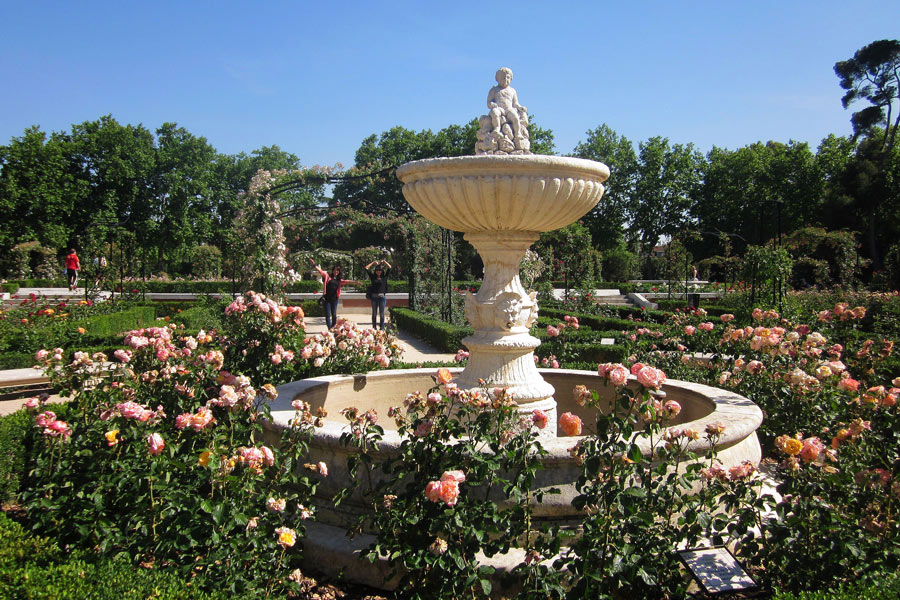
The Retiro Park rose garden
The rose garden in Retiro Park was designed by Cecilio Rodriguez in 1915. It contains over 4,000 rosebushes, most of which bloom in May and June. It’s a peaceful place that awakens your senses with the many scents of the flowers that surround you.
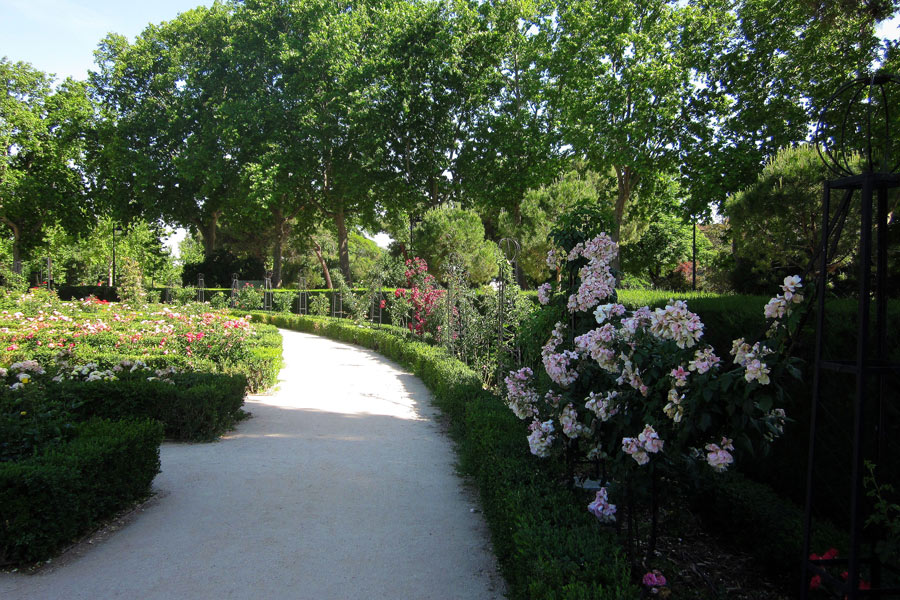
The Retiro Park – Garden


